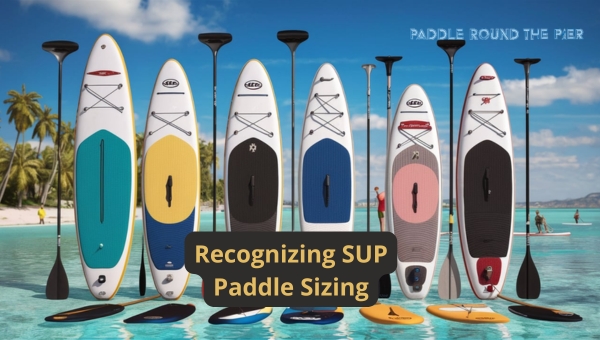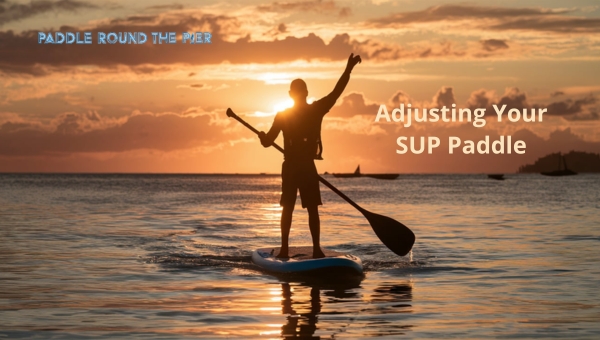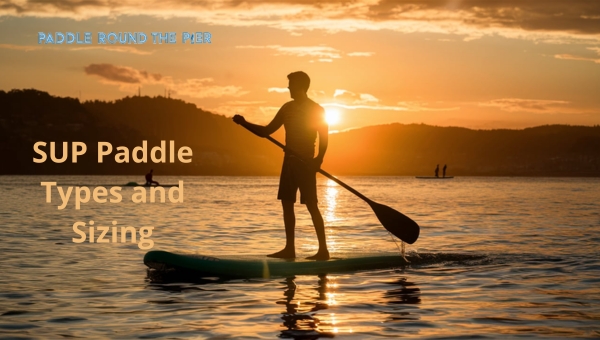SUP Paddle Size Guide: Find Your Perfect Fit Today!
Looking to dive into the world of stand-up paddleboarding but unsure about the right paddle size? You're in the right place! In this SUP paddle size guide, we’ll break down everything you need to know about choosing and adjusting your paddle for the best experience on the water.
From recognizing ideal paddle lengths to adjusting for comfort and efficiency, this guide covers it all. Plus, we’ll explore different paddle types and common mistakes to avoid. Stick around to make your paddleboarding adventures smoother and more enjoyable!
Recognizing SUP Paddle Sizing
The proper paddle size is crucial for a smooth and pleasurable paddleboarding experience. Whether you're a novice or an experienced paddler, knowing how to select the appropriate paddle length can make all the difference in the world.

Let's explore the main components of SUP paddle sizing, from determining your perfect paddle length to taking into account the different factors that affect it.
The Ideal Paddle Length
Determining the ideal paddle length is crucial for a comfortable and efficient paddling experience. Here's how to find the perfect size for different users and activities:
- Recreational Paddling: For casual, flatwater paddling, your paddle should be about 8-10 inches taller than your height. This length allows for a relaxed, comfortable stroke.
- SUP Surfing: If you're into surfing, a shorter paddle—around 6-8 inches above your height—is more suitable. It helps with quick maneuvers and maintaining a compact stance.
- Racing: Competitive paddlers often prefer a longer paddle, roughly 10-12 inches taller than their height. This length maximizes reach and power for each stroke.
Factors Affecting Paddle Length
Several factors can influence the appropriate paddle length. It's not just about height; other elements come into play:
- Height: Taller paddlers generally need longer paddles to maintain an effective stroke.
- Paddling Style: Your style, whether recreational, racing, or surfing, dictates different paddle lengths for optimal performance.
- Board Type: The type of board you use affects paddle length. For instance:
- Inflatable Boards: These often require longer paddles due to their increased volume.
- Surfboards: Shorter paddles are typically better for maneuverability on smaller boards.
Understanding these factors can help you choose the right paddle, ensuring both comfort and efficiency on the water.
By keeping these points in mind, you'll be well on your way to a more enjoyable and effective stand-up paddleboarding experience.
Also Read:
Adjusting Your SUP Paddle
When it comes to getting the best out of your stand-up paddleboarding (SUP) experience, having the right paddle size is essential.

Adjusting your SUP paddle correctly can significantly enhance your performance and comfort on the water. Let's dive into the methods you can use to adjust your paddle size and how to measure yourself for the perfect fit.
Methods to Adjust Paddle Size
There are several ways to adjust the size of your SUP paddle, ensuring it meets your specific needs:
- Adjustable Paddles: These paddles come with an adjustable shaft, allowing you to modify the length easily. This is great for paddlers who share equipment or switch between different activities.
- Fixed Paddles: These paddles have a set length, so you need to measure carefully before cutting them to size. Some fixed paddles allow for temporary adjustments using a hot glue gun.
- Telescoping Paddles: These paddles can be extended or shortened by pulling sections out or pushing them in, offering a quick and convenient way to find the right length.
Measuring for Correct Paddle Length
Getting the correct paddle length is straightforward if you follow these steps:
- Stand Straight: Stand on a flat surface with your paddle upright, the blade touching the ground.
- Raise Your Arm: Lift one arm straight above your head.
- Check the Grip: The paddle's handle should reach your wrist or just above it when your arm is extended.
This method ensures your paddle is neither too long nor too short, providing the balance needed for efficient paddling. Always remember, a well-sized paddle can make a huge difference in your overall SUP experience.
By understanding and applying these methods, you can adjust your SUP paddle to match your needs perfectly, making each stroke more effective and enjoyable.
Also Read: Isle Megalodon Review: Ultimate Guide to This Paddle Board
SUP Paddle Types and Sizing
Choosing the right SUP paddle can significantly improve your paddling experience. With various types available, each designed for specific activities and preferences, it's essential to understand the differences.

Let's dive into the types of SUP paddles, how to choose based on your discipline, and the correct way to hold your paddle for optimal performance.
Types of SUP Paddles
Understanding the different types of SUP paddles can help you make an informed choice. Here are the main categories:
- All-Around Paddles: Versatile and suitable for a range of activities, from flatwater paddling to light surf. These are great for beginners and casual paddlers.
- Surf Paddles: Shorter in length, making them more maneuverable in waves. Ideal for those who enjoy SUP surfing.
- Racing Paddles: Designed for speed and efficiency, these paddles are longer and stiffer, providing maximum power with each stroke.
- Touring Paddles: Built for long-distance paddling, offering a balance of comfort and efficiency. They are typically lightweight and durable.
Choosing the Right Paddle for Your Discipline
Selecting the right paddle depends on your specific paddling activity. Here's how to choose based on different disciplines:
- Touring: Opt for a longer paddle to enhance reach and efficiency over long distances. Lightweight materials are preferred for comfort.
- Racing: Choose a stiff, longer paddle for powerful strokes and maximum speed. Look for designs that reduce drag.
- Surfing: Go for a shorter paddle that offers better control and agility in the waves. Flexibility in the shaft can help with quick movements.
Correctly Holding Your Paddle
Proper technique in holding your SUP paddle is crucial for comfort and performance. Follow these tips:
- Grip: Hold the paddle with one hand on the top handle and the other on the shaft, about shoulder-width apart.
- Blade Angle: Ensure the blade is angled away from you, so the power phase of your stroke is effective.
- Relaxed Grip: Keep your grip relaxed to avoid strain, using your core muscles to power your strokes rather than relying solely on your arms.
- Posture: Maintain a slight bend in your knees and keep your back straight to distribute effort evenly and reduce fatigue.
By understanding these elements, you can select the perfect paddle and use it effectively, making your time on the water enjoyable and efficient.
Also Read: Kayak Scupper Plugs: Essential Tips and Effective Techniques
Common Mistakes and Solutions
Getting the right SUP paddle size can sometimes be a bit tricky. It's easy to make mistakes, but don't worry. Here, we’ll explore some common errors and how to fix them.
Signs Your Paddle Is Too Long
A paddle that's too long can really mess up your paddling experience. Here are some signs you might notice:
- Shoulder Pain: You might feel discomfort or pain in your shoulders because you're overreaching with every stroke.
- Awkward Paddling: Your strokes might feel clumsy or inefficient, making it hard to maintain a smooth rhythm.
- Ineffective Strokes: You might find it difficult to control your paddle, leading to less powerful strokes.
Signs Your Paddle Is Too Short
Just like a paddle that's too long, one that's too short can cause problems, too. Look out for these signs:
- Lower Back Pain: A short paddle can force you to bend too much, causing strain on your lower back.
- Loss of Power: You might not be able to fully submerge the blade, reducing the power of your strokes.
- Stability Issues: A shorter paddle can make it harder to balance, especially in choppy conditions.
FAQs
Is a 30-inch wide paddle board stable?
Yes, a 30-inch wide paddle board is generally stable. It provides a good balance for most paddlers, making it suitable for beginners and recreational use.
How full should my paddleboard be?
Your paddle board should be inflated to the recommended PSI, usually indicated by the manufacturer. Proper inflation ensures optimal performance and stability on the water.
Can a SUP be too big?
Yes, a SUP can be too big if it's difficult to maneuver or carry. A board that's too large might also be less responsive, especially in waves or windy conditions.
Conclusion
To sum up, choosing the right SUP paddle size is crucial for an enjoyable and efficient paddling experience. By understanding the ideal paddle length, considering various influencing factors, and knowing how to adjust and measure your paddle correctly, you can ensure a seamless time on the water.
Remember, the right paddle can make all the difference in your performance and comfort. If you found this guide helpful, don't miss out on our other informative blogs! Dive deeper into the world of paddleboarding by exploring more articles on our site.
